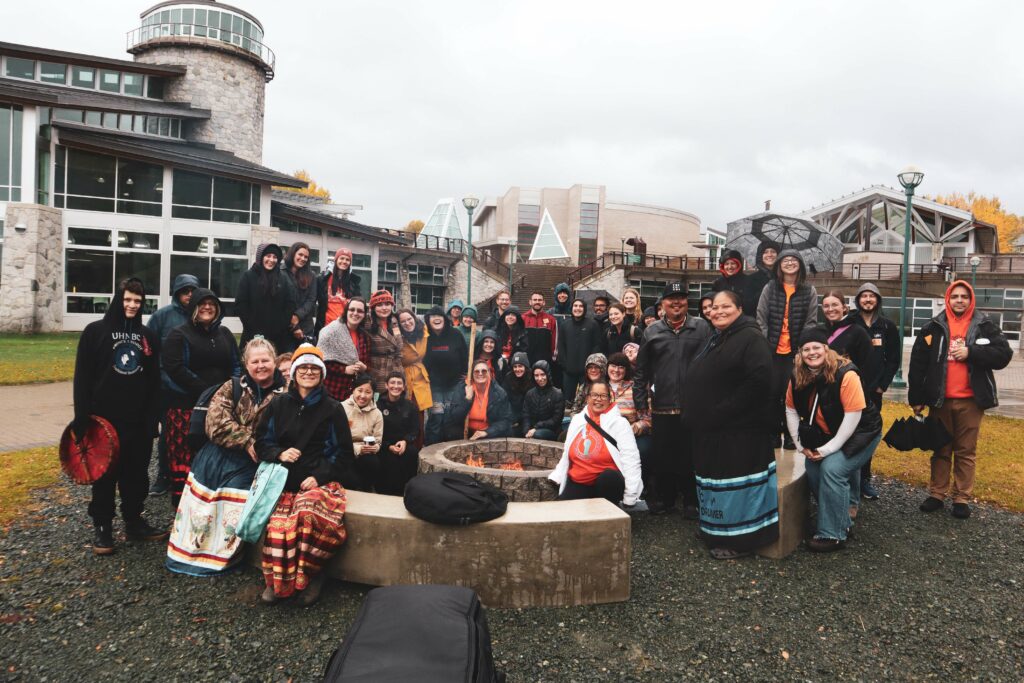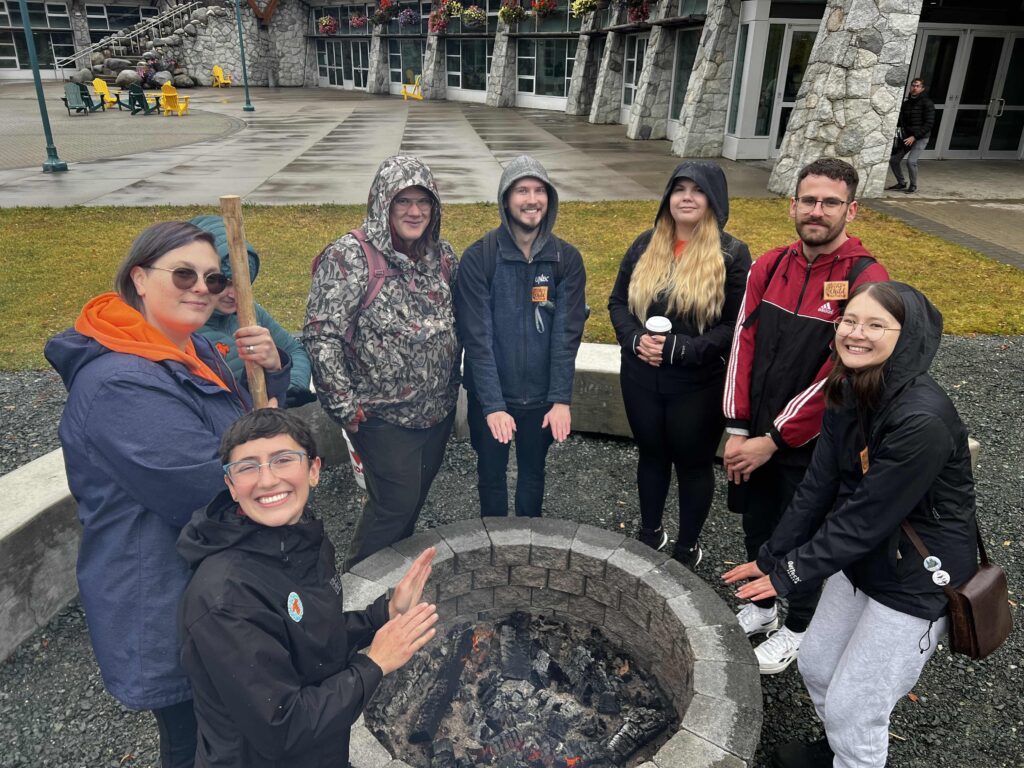In a sincere effort towards meeting the Calls to Action set out by the Truth and Reconciliation Commission, our cohort is working towards being educated “public servants on the history of Aboriginal peoples” (Call To Action 57). Within the scope of our profession, we are therefore striving to learn about Indigenous peoples to meet Call to Action 62 and 63, the latter of which asks that we “develo[p] and implemen[t] Kindergarten to Grade Twelve curriculum and learning resources on Aboriginal peoples in Canadian history, and the history and legacy of residential schools”. Therefore, the last day of classes leading up to the National Day for Truth and Reconciliation, our class participated in a Ceremonial Fire Circle as well as a Drum Circle, thanks to the collaboration between our professors, the University, Indigenous artists Clayton Gauthier, and the UHNBC Drummers Group.

Photo by Talia Grace Bleiler
Before I engage in my discussion of these practices, I want to clearly state that I am not claiming to know Indigenous understandings of the Ceremonial Fire Circle or Drum Circle. I am sharing how I understand and intuit these experiences within my own worldview and cultural context and my limited understanding of Indigenous worldviews. I am therefore sharing my thoughts as I work towards trying to understand, for the purpose of eventually living as much as I can within a worldview that sees and understands interconnectedness, what these practices meant or felt like to me.
The Ceremonial Fire Circle and Drum Circle, as I am coming to understand them, both offer a kind of medicine, from which those who partake in the circles can benefit, especially if they are authentically engaged and present. The fire itself is cleansing. After Clayton had shared his story with us, a story from which each of us was able to take away a lesson given to us through Clayton by the creator, he then invited us to give something to the fire. It was suggested that we unburden something when we gave to the fire, but the accent was also made on the fact that what we were giving to the fire was in reciprocity to what the fire had given to us. It is difficult for me to explain, but engaging in reciprocity with the fire requires an acknowledgement of a different kind of fundamental nature to the external world, which aligns it with and within us, rather than without. This is extremely powerful, and where there was a disconnect in understanding the interconnectedness between the world and the self, this reconnection is healing.

Photo by Tessa Doll
“Education is what got us here, and education is what will get us out.”
Justice Murray Sinclair
As for the Drum circle, the beating of the drum and the signing resonated within us and through us into the ground, connecting us to the earth. Ultimately, it grounded us to the land and that grounding helps us restore balance within ourselves, bringing peace. There is so much more to say and explore, but, I believe, here is the place to conclude for now.

Photo by Talia Grace Bleiler
Works Cited
Truth and Reconciliation Commission of Canada, “Truth and Reconciliation Commission of Canada: Calls to Action”. Accessed October 11, 2023.